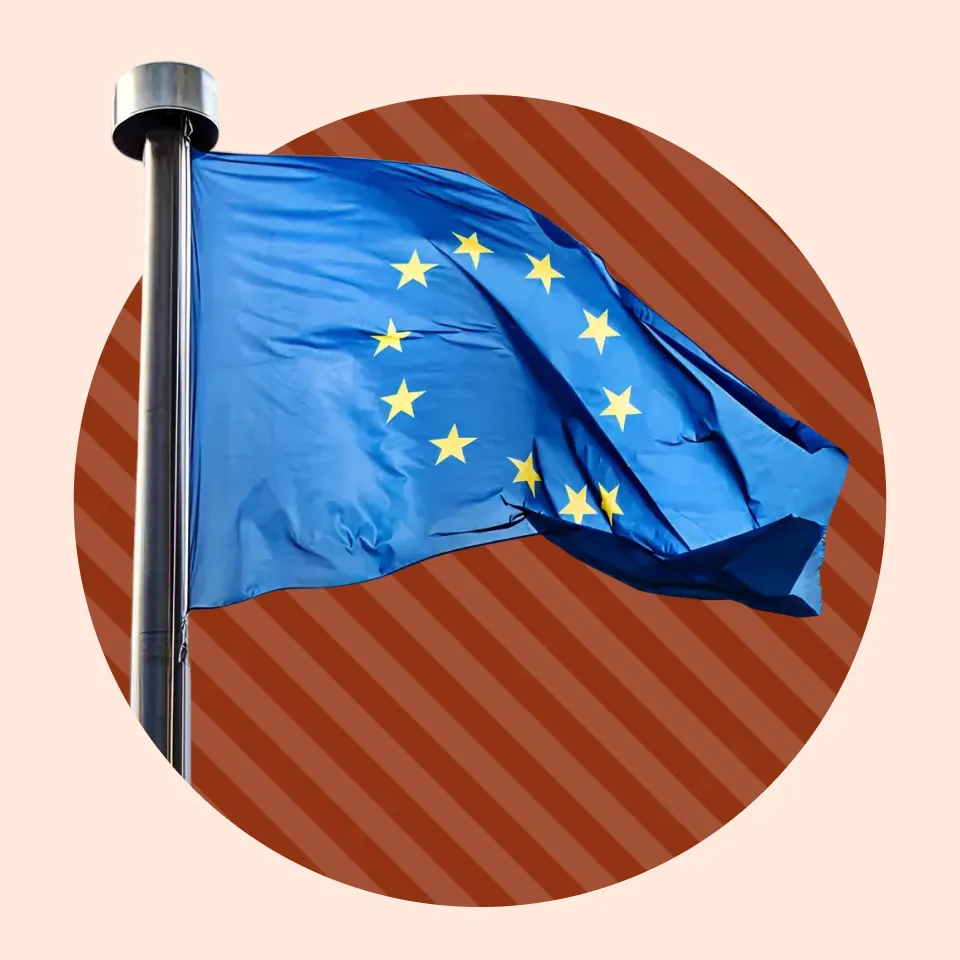The year 2023 has seen a dynamic change in how social media impacts society and businesses. People are increasingly taking breaks from platforms like Twitter, citing negative environments. Meanwhile, Facebook, rebranded as Meta, is losing its grip on the younger generation, who are gravitating towards platforms like TikTok and YouTube.
This exodus from traditional platforms is rooted in growing concerns over privacy and the spread of disinformation. TikTok, for instance, is at the center of controversies around data privacy and content that targets minors. Simultaneously, Twitter has undergone significant changes under Elon Musk's leadership, affecting platform moderation and user experience.
These developments underscore the need for a dynamic and adaptive social media policy. It must be a living document, responsive to these shifts and sensitive to the nuances of digital interaction.
So, let’s see how you can create a robust company social media policy that adheres to the governing laws as well as protects your company from any reputation and legal risks. We’ve also included a free template to kickstart your policy-making process.
What could go wrong without a company social media policy?
“The expanded reach of social platforms and their integration into our daily lives places organizations at a higher risk for damage to brand and reputation.”
~ Alonzo Martinez, Associate Counsel, HireRight
How to Create an Effective Social Media Policy
It's a regular Tuesday, you're sipping coffee, and suddenly your phone explodes with notifications. Your company is trending on Twitter—and not for a good reason. This could be the reality without a solid social media policy in place.
Let's see the chaos that could ensue.
#1 Accidental insider trading
You know your employees are proud of where they work. But what happens when Jane from accounting tweets about a big deal before it's public? It leads to an SEC investigation!
It happens all the time!
In 2013, Tyrone Hawk acted on insider information he overheard from his wife's work call about her company's acquisition plans. Hawk's decision to trade shares just before the public announcement led to him netting $150,000. However, he ended up paying more than $300,000 to settle the SEC charges.
So, educate your team on what constitutes insider information. Because, let's face it, the SEC doesn't care if it was an honest mistake.
#2 Privacy and security risks
In the age of information, a little too much sharing can lead to a lot of trouble. An excited employee could post a photo of their workspace, accidentally revealing confidential client information on their monitor. It's a security breach waiting to happen.
Take Uber's 2018 case, where the FTC penalized them for failing to secure sensitive data, leading to a massive data breach. The expanded settlement required Uber to disclose future consumer data breaches and submit to third-party audits of their privacy policy.
#3 Public relations crisis
Social media is like a megaphone, and a single misguided post can escalate into a full-blown PR disaster. Remember, the internet never forgets.
Nestlé faced a PR nightmare in 2010 when Greenpeace launched a campaign criticizing its palm oil sourcing. Nestlé's inadequate response to the ensuing social media uproar only fueled the fire.
Domino's Pizza also suffered a severe PR crisis in 2009 due to a distasteful employee video, showcasing the importance of swift and effective crisis management.
#4 Legal liabilities and compliance issues
Without guidelines, your company could unknowingly violate advertising laws, slander competitors, or run afoul of regulatory standards. It's a legal tightrope walk, and without a net (read: policy), the fall can be quite painful.
An example of this is the FTC's 2020 lawsuit against Teami, alleging the company used false claims about its products on social media and failed to disclose paid endorsements, resulting in a $15.2 million settlement.
#5 Poor impact on workplace environment
Social media is the new water cooler, but what happens when workplace banter turns into online spats? It can impact team dynamics, employee morale, and even lead to harassment issues. A policy can help keep the digital peace and foster a positive work environment.
Also read: In-House Legal Guide to Safeguarding Company Data
How restrictive can I make my company's social media policy?
“A social media policy needs to be positive and support productivity rather than limit it, censor it and hold employees down. Nobody wants to feel restricted.”
~ Claude-Dee Laguerre, Vice President, Quode
How to Create an Effective Social Media Policy
You're not running a silent monastery, right? Your social media policy shouldn't feel like it. While protecting confidential information is key, your policy should also respect employees' rights to express themselves.
In the US, employment is typically “at-will,” but this freedom in shaping policies comes with legal boundaries. Crucially, while employers can limit employee speech, they must respect the rights under the National Labor Relations Act (NLRA). This Act protects employees' rights to discuss work conditions, pay, and management, vital for unionizing and collective bargaining activities.
Consequently, social media policies must not infringe on these protected activities, as interpreted broadly by courts and agencies. For instance, rules restricting employees from sharing information about pay or workplace conditions could violate the NLRA, even if such communications appear inflammatory or aggressive.
Be clear about what's off-limits (like trade secrets or insider information) but also assure employees that their personal opinions, when expressed responsibly, are their own. Encourage open dialogue about these policies to understand and address employees' concerns.
Avoid overreach into personal social media usage. Your policy should be a guardrail. Make it clear that the policy applies to posts that could be linked back to the company or affect its reputation.
However, steer clear of dictating what employees can post in their personal capacity. Remember, a 'like' or 'share' doesn't always equal an endorsement. Train your team to use disclaimers when their posts might be associated with the company.
Also read: Company Cybersecurity Policy: Best Practices
What to include in a company social media policy?
A good policy is more than rules; it's about fostering a responsible and aware social media culture in your company.
Here’s what you should include in your company social media policy:
#1 Guidelines on brand representation and messaging
Your employees are your brand ambassadors. Offer clear guidelines on how to communicate company-related information. Ensure they understand the tone, style, and core messages your brand embodies. Consistency is key in building a strong brand image.
#2 Clear instructions for online behavior
Spell out what counts as acceptable behavior. This includes being respectful, avoiding offensive language, and not engaging in online harassment. Remind your team that the internet is a public space, and their actions can reflect on the company.
#3 Definitions of trade secrets and confidential information
Define what a trade secret is in your industry and what information falls under this category. Make it crystal clear that sharing this info is a big no.
#4 Examples of inappropriate conduct
People need examples. Include scenarios of what is considered inappropriate to avoid gray areas. Think along the lines of discriminatory posts, sharing confidential information, or making defamatory statements about competitors.
#5 List of social media activities to avoid
Warn against engaging in seemingly harmless activities that could compromise personal or company data. This includes participating in or sharing quizzes and games that collect personal information.
#6 Reporting procedures for policy breaches
Create a clear process for reporting suspected breaches. Outline steps for investigating and addressing these incidents to ensure fairness and transparency.
That said,
“Don't go around friending employees for the purpose of having access to the content they are posting on their personal accounts,”
~ Mark Kluger, Employment Attorney, Kluger Healey in Fairfield, N.J.
How to Create an Effective Social Media Policy
#7 Disciplinary actions for policy violations
Lastly, be upfront about the consequences of policy violations. This could range from a warning to termination, depending on the severity of the breach. Make sure these consequences are fair, consistent, and legally sound.
Also read: Navigating the Legal-Security-Privacy Relationship
Best practices for creating a company social media policy
Each of these practices is designed to create a social media policy that is practical, understandable, and effective. The goal is to ensure that everyone in your company is on the same page when it comes to social media use, balancing freedom of expression with the need to protect the company and its employees.
#1 Explaining the why behind our social media policy
- Articulate why the policy exists: to protect the company's reputation, comply with laws, and maintain a respectful workplace
- Explain the benefits for employees, like clarity on expectations and protection from unintentional missteps
#2 Distinguishing company-affiliated posts from personal posts
- Require employees to use disclaimers when expressing personal opinions
Poor: “Employees should be careful when posting.”
Better: “Employees are encouraged to express their personal opinions on social media. However, when discussing topics related to [Your Company's Name] or our industry, please use a disclaimer such as “Opinions are my own and not the views of my employer' to avoid any confusion about the nature of the post.’”
- Offer guidelines on how to clearly separate personal social media from professional roles
Poor: “Keep work and personal life separate online.”
Better: “To maintain a clear distinction between your professional and personal presence on social media, we recommend using different profiles or account settings for work-related and personal activities. For example, use LinkedIn for professional networking and contributions, while saving platforms like Facebook or Instagram for personal interactions and non-work-related content.”
#3 Spotlighting content that's off-limits
Specify what content is off-limits: discriminatory remarks, harassment, confidentiality breaches, and false information.
#4 Harmonizing social media with company core values
Try incorporating established policies into your company's social media policy. It also ensures consistency in employee conduct across different platforms.
For instance, Dell’s social media policy reinforces adherence to other company policies, including their Code of Conduct and Diversity and Equal Employment Opportunity Policy. This approach ensures that any post violating company policy in another forum also violates the social media policy.
#5 Making it clear and easy for everyone
Write the policy in clear, straightforward language. Avoid complex sentences and ensure that the guidelines are concise and easy to understand.
Example: Instead of saying, “Employees are proscribed from disseminating content that could be construed as a contravention of the company's confidentiality obligations,” simplify it to, “Do not share confidential company information on social media.”
Also, refrain from using legal or technical terms that might be confusing to employees who don't have a legal or technical background.
Example: Replace legal terms like “defamatory content” with more understandable phrases like “posts that unfairly harm someone's reputation.”
#6 Adapting the policy to the evolving digital landscape
Reviews and updates ensure that the social media policy remains current with legal standards, technological advancements, and shifts in social media trends, providing comprehensive guidance for employees.
So, schedule annual reviews. Set a fixed date each year to review your social media policy. This annual review should consider changes in social media platforms, legal updates, and shifts in company culture.
Also consider involving a cross-functional team. You could form a review committee for your social media policy, comprising members from legal (to address compliance issues), HR (to ensure employee conduct standards are met), communications (to keep the policy aligned with public relations strategies), and IT (to address data security concerns). This team collaborates to assess the policy's effectiveness and recommends updates.
Conclusion
A well-structured social media policy isn't just a nice-to-have; it's a necessity. From avoiding legal entanglements to nurturing a positive workplace environment, the stakes are high.
Finally, our easy-to-use company social media policy template can easily resonate with your unique corporate ethos. So, don't wait for the storm – prepare ahead. Download the free template now and set the course for responsible and effective social media use in your company.

.avif)
.avif)







